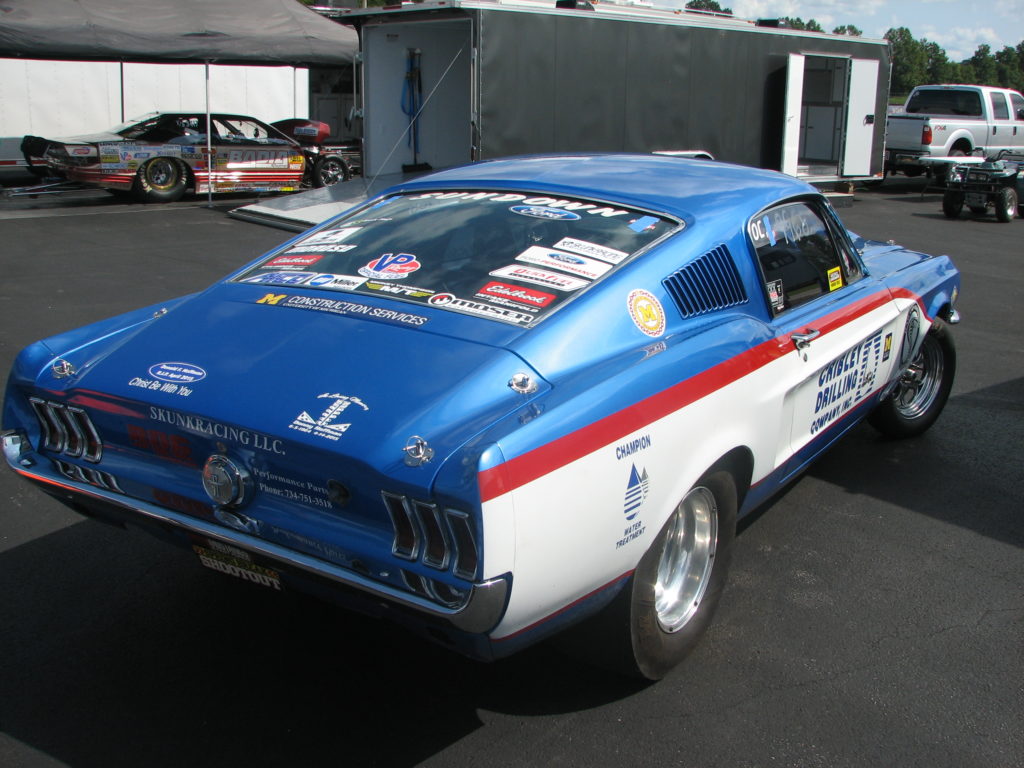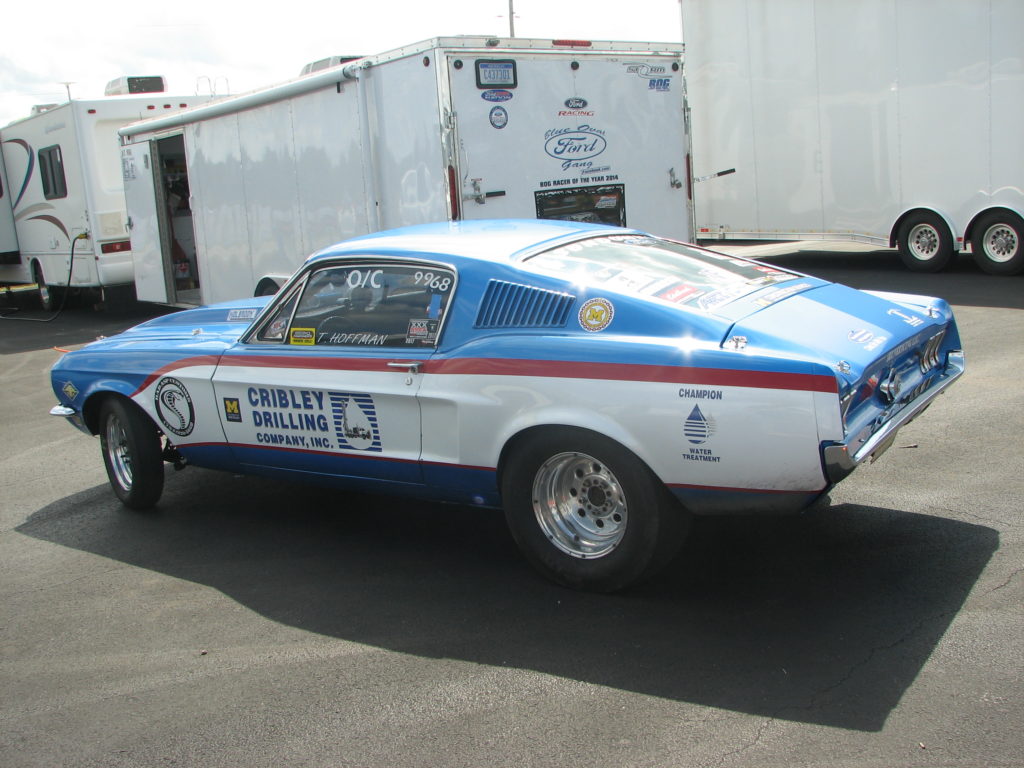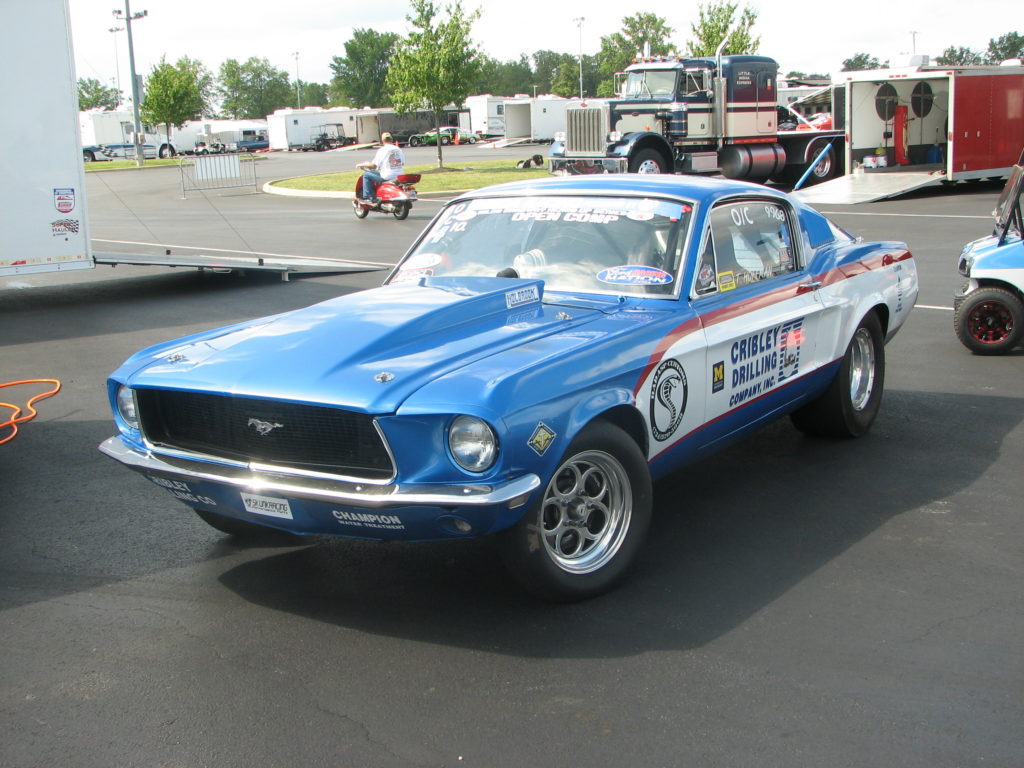NORWALK, OH – In racing, safety is as important as horsepower.
For that reason, we talked to racers about staying safe on the track at the 2017 NMCA All-American Nationals at Summit Motorsports Park in Norwalk, OH.
Tom Hoffman races a 1968 Ford Mustang in the NMCA’s Open Comp class. His car boasts a 632-horsepower 351W that propels the fastback to a 10.50 elapsed time (ET) in the quarter-mile.
Hoffman recently swapped in that new, more powerful Windsor engine, which meant that he had to upgrade some of his safety gear too.
For starters, his car was now capable of sub 10.7-second ETs, which required upgrading to a 10-point roll cage from a 6-point roll cage. These types of tiered regulations are common at most race tracks—the faster you go, the more safety equipment you’ll need.
More importantly, most sanctioning race bodies place an expiration date on safety equipment. Hoffman replaces his harness and window netting every year, he said. His helmet was brand-new as well, as it had just reached the 10-year replacement threshold.
With so many regulations, some may find it tough to stay up to date. That’s why most race bodies, including the NMCA, send out new, updated rule books to members before the start of every race season.

For the causal Friday-night visit to the local strip, a call to the race track’s office will help you determine what you’ll need to race safely (and pass tech inspection).
Hoffman made it clear that, for him, safety equipment is no joke.
“You can have a great car, but all it takes is one mistake,” he said.
Hoffman said he has witnessed two serious crashes, in which both drivers were able to walk away from because they were using the proper safety gear.
If there is an unsung hero of safety equipment, it’s the transmission shield, Hoffman said. The transmission shield fits in the transmission tunnel and, in the event of catastrophic failure, it prevents projectile debris from entering the vehicle cabin.
“I’ve seen what an exploding transmission can do,” he said. “The rules say that if you run faster than a 10.99, then you have to have one.”
Hoffman also mentioned the importance of a driveshaft loop. His Mustang runs race slick tires, and the regulations mandate that he install a driveshaft loop. A driveshaft loop prevents the driveshaft from spinning out of control in the event of driveshaft, U-joint, or yoke/pinion failure.

When asked which single piece of safety equipment is most important, Hoffman didn’t have an exact answer.
“You need it all,” he said. “It all works together.”
With that, we left Hoffman to finish prepping for the first round of qualifying later that day. Good luck to him, and all the drivers in this weekend’s NMCA All-American Nationals.


[…] he doesn’t want to install a roll cage or drill any holes in his classic in order to include the safety equipment required to participate in sanctioned racing events with a 10-second […]